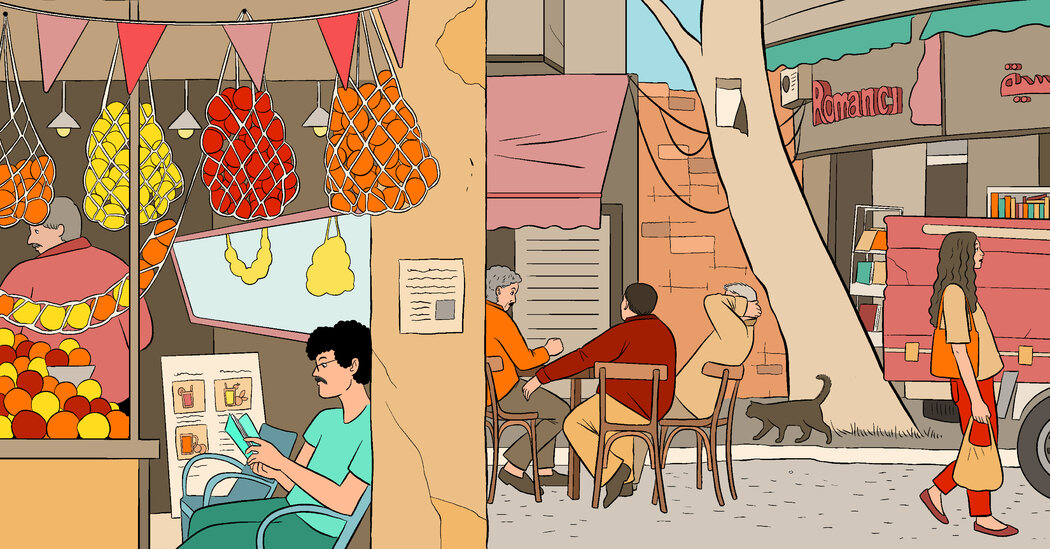In the same vein is Albert Cossery’s “The Colors of Infamy.” A very fast read, the book follows a well-mannered pickpocket and serves as a guide of sorts to the dynamics of the city’s ancient markets — the swindling, the bargaining, the haggling for a deal. Once you set foot in the Khan el-Khalili bazaar, or even onto the pyramids plateau in Giza, where you will be swarmed with offers for camel rides, horse rides and guides, you may appreciate having read this book.
What books or authors should I bring along with me?
Cairo is characterized in large part by its layers of architecture — Fatimid, Mamluk, Khedival. But it also has a rich history of modern architecture, from turn-of-the-century revivalism to concrete expressionism and modernist design. This includes the houses of iconic cultural figures. The house of the singer Oum Kulthoum has been demolished, but similar homes by the same architect, Ali Labib Gabr, still stand in the vicinity, including what was once my grandmother’s house, just a few blocks away. This is not a novel, but Mohamed Elshahed’s “Cairo Since 1900: An Architectural Guide” offers a brilliant guide to this modern age and makes for a perfect walking-tour companion, speaking not only of the buildings and their historic significance but also of that era.
In fiction, Waguih Ghali’s “Beer in the Snooker Club” is a cult classic originally written in English that depicts post-colonial Cairo through the eyes of a nationalist, Anglophone aristocrat grappling with a regime change and new socialist policies under President Gamal Abdel Nasser. Although it was written in 1964, it also tells the story of Egypt now.
At the other end of the class and experiential spectrum during that same political regime is Sonallah Ibrahim’s experimental novel “That Smell.” Published in 1968, it tells the story of a recently released prisoner and his malaise as he struggles, and fails, to readjust to everyday life on the outside. There are many days in this fast-changing city that feel like this novel to me.
If I have no time for day trips, what books could take me farther afield instead?
André Aciman’s essay collection “False Papers,” for a journey to Alexandria. Born and raised there, Aciman returns decades after his family left for exile and tries to retrace the city as it existed in his memory. He finds little of it left, but his search captures in vivid detail the city as it is best remembered. His pensive book moves…
Click Here to Read the Full Original Article at NYT > Travel…
